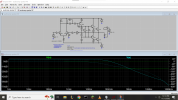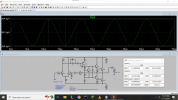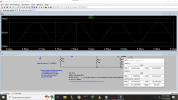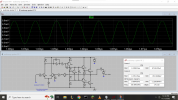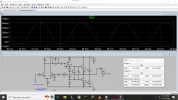I am pretty sure Jim Brown knows how feedback works. I think I do, but who knows, tough to identify keyboard warriors these days...
I was a tech during the CB craze of the 70's and 80's and it was a fairly common problem at the time for me. The CB band is around 30 MHz. There were also AM (~1 MHz) and FM (~100 MHz) as well as TV (wideband) towers, and the occasional HAM, that caused interference. I rarely saw issues from HAM stations as they tended to be cleaner than CB (illegal) amplifiers and HAMs tended to be savvy enough to help their neighbors themselves. Don't really know how often it happens now; anecdotally much less frequently judging by how rarely I run into it these days (only a few times in the past few years). But, I am no longer "in the biz", so don't have a good baseline reference.
For the record (no pun intended), phono stages were by far the worst offenders I dealt with, and adding an RFI filter/snubber got to be common. Tricky to do without messing up the cartridge matching, natch. IIRC I tended to use an LCR network instead of a simple RC snubber to isolate the cap. Been a while. I still have an old LM381 phono amp I built (one of my first home-brew PCB designs, ink and acid) that has an LCR input filter on it with little hand-wound coils.
The culprits I have dealt with more recently are dimmers and LED replacement lights with their noisy little SMPS supplies. But by and large the culprit has not been via the speaker wires, except in one or two cases, over the last say ten years or so.
Whatever - Don
27Mhz , i blew a tv up that was about around maybe 90 feet away ? one my Dad's friends and he had every right be red face when came around other , no day
19 no year 83 , as turned out had worlds first fastest VHS player x100 speed , when TX ing with 200w the VCR speed increased when using remote it increased in speed even faster ! then tv went out ! ? curious ? switched it off then on and came back on ,
i was puzzled why the SWR was reading in the red for over , no week ? thought it had rain water in the base - coil of GPA 1/2 wave 18 footer ,
it tuned out i had centre core on the PL 295 dry solder joint and re soldered and SWR was back in the green around 1.5 ratio ?
so i had maybe demon RF signal output and maybe why every other breaker was moaning about my signal phantom-ing in other channels
but i manged to blow a tv up , and felt bad about that , almost had Cobra 148 GTL-DX locked away , my Dad was not pleased
i guess the neighbor if when had tv repaired may be a protection surge circuit that needed replacing ( just guessing )
i have superstar 360FM now its same as Cobra 148 GTL-DX minus the roger bleep which is only a capacitor if i soldered one in , i more less have same power amp 200w , ant is silver rod 1/4 wave 22 footer and i maybe hundred or so below actual but i got to , usa few times and italy
and no interference when using 200w it doesn't break over the THX system which is 40kw , if only my base station was 40kw
filters on tv's today have better grade and digital and other higher frequency if only manufactures made better tv's as they would have known of the CB radio and uk gov ruined CB in uk with lousy FM uk 27 that legalized nov 5th 1981 and nobody was going to dance to the uk gov , myself included not giving up the Cobra , had small 40 ch FM 4w and it still interfered with some neighbors tv's expect for my Dad's and the base ant was near the tv ant , ? don't care to know why its 1980's maybe some gremlins was attached to ant ?

